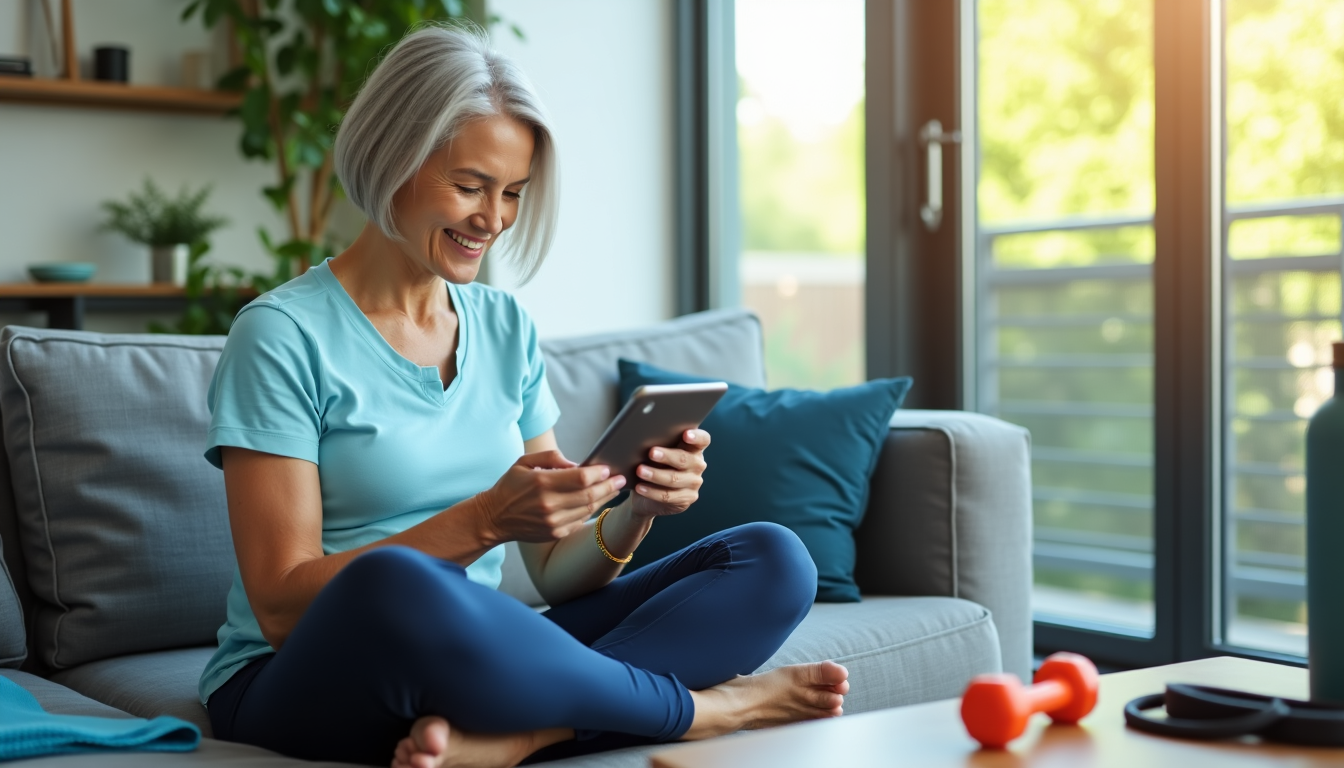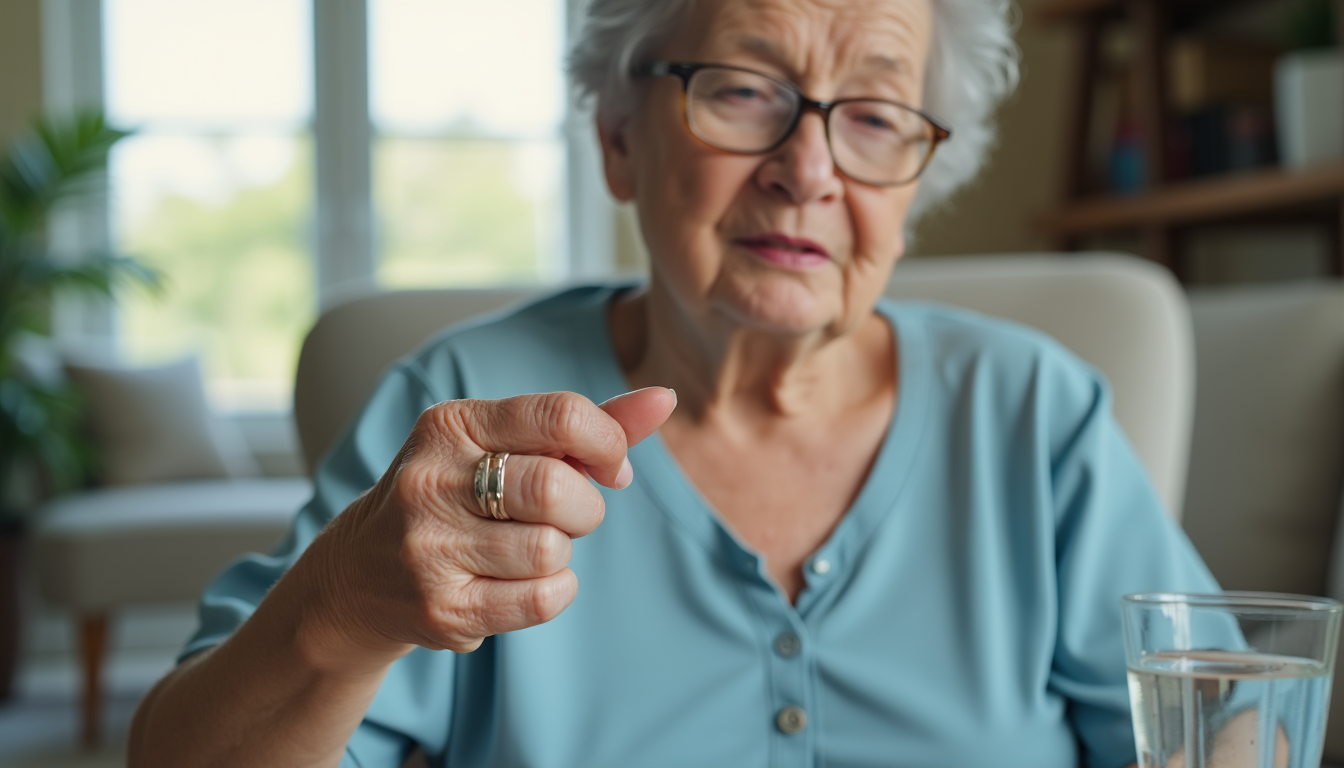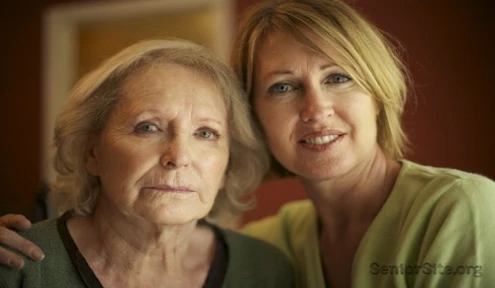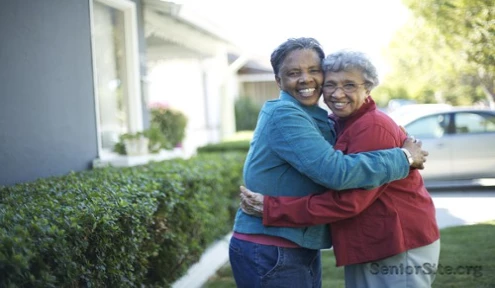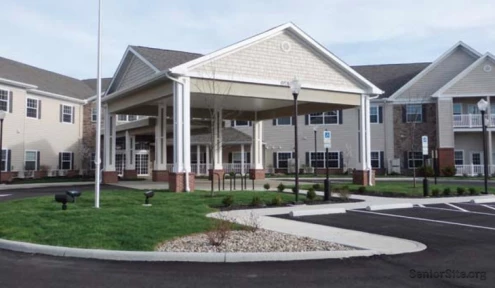The mobile app marketplace now has over 2 million apps, which makes finding a senior fitness app feel like searching for a needle in a haystack. Older adults need tailored exercise solutions that put safety first and actually work.
Regular exercise is vital for seniors. It helps improve balance, maintains muscle mass, and lowers the risk of falls. Senior fitness apps have evolved with easy-to-use interfaces, workout plans you can customize, and built-in safety features. You’ll find everything from strength training to gentle yoga and quick 7-minute workouts. We’ll help you pick the perfect app that fits your fitness goals and comfort level.
This piece walks you through the best exercise apps to keep you active and independent. You can track your progress right from your mobile device and stay motivated on your fitness journey.
Finding the Right Fitness App for Your Health Goals
Older adults need to pick a fitness app that truly fits their needs. Research from the National Institute on Aging shows exercise becomes more important as we age. The right tech support can make a huge difference in staying active.
Identifying your fitness priorities
Your current physical condition should be your starting point before you download any app. NHS guidelines say adults 65 and over should do at least 150 minutes of moderate exercise each week. If you’re already active, 75 minutes of vigorous activity works too. You should also do exercises that build strength, balance, and flexibility twice weekly.
These health goals should be your focus:
- Improving strength and muscle mass
- Enhancing balance and preventing falls
- Boosting heart health through cardio
- Increasing flexibility and mobility
- Supporting mental wellness alongside physical health
Your doctor should be your first stop. They can suggest exercises that work for your condition and tell you about any tests you need before starting a fitness program. This full picture will help you pick an app that works with your physical abilities and health needs.
How to match apps with your exercise priorities
Finding the right app becomes easier once you know what you want. Here’s what to look for in a fitness app:
User-friendly interface – Seniors need simple exercise apps. The best ones have easy navigation and clear instructions without needing advanced tech knowledge. Complex designs and too many features often frustrate older adults.
Exercise variety – Good fitness apps offer different types of workouts to keep you involved. Research shows seniors need aerobic, muscle-strengthening, and balance activities every week. Look for apps with your favorite activities – yoga, strength training, walking, or chair-based exercises.
Customization options – Your fitness experience gets better with personalization. Quality apps let you adjust workouts based on your fitness level, physical limits, and goals. This flexibility helps you move forward at your own pace.
Safety features – Pick apps that show exercises clearly and focus on proper form. The CDC says seniors should start with low-intensity exercises and include warm-ups and cool-downs. Your app needs to highlight these safety basics.
Setting realistic expectations
The right expectations at the start lead to better long-term results. Health experts say specific, measurable goals help people stay more active. Instead of saying “I want to get fit,” try “I’ll walk for 10 minutes three times this week.”
Tracking your progress can boost your motivation. Most apps have tools to record your activities and show how you’re improving. Some people do better when they share their progress with friends or family.
Note that steady effort beats intense workouts. Studies show that small bursts of activity throughout your day add up to your weekly goals. Start small, build gradually, and create habits that last.
App-based communities or exercise partners can make a big difference. Group activities and buddy systems get you moving and provide social support. This social aspect often determines whether you stick to your fitness routine.
Best Workout Apps for Strength and Muscle Building
Muscle building becomes more important with age. Strength training helps maintain muscle mass, increases bone density, and improves balance. These elements are vital factors that help you stay independent and active as you grow older.
Apps with guided resistance training
Dr. Muscle leads the pack as a top-rated strength training app designed with older adults in mind. An exercise scientist developed this app that uses artificial intelligence to create individual-specific workout programs based on your needs and goals. The app adapts your training program by learning from your past workout data, which ensures the right challenge level without pushing too hard.
Dr. Muscle stands apart from generic fitness programs by offering a complete mix of strength, cardio, bodyweight, mobility, and machine exercises that work both at the gym and home. The app guides you through appropriate weights so your muscles get the right challenge level needed to progress. The app’s free plan lets you try its AI-powered workouts without any financial commitment.
JEFIT gives you access to over 1,300 exercises and thousands of pre-designed programs if you want variety. The app shines at building community—you can connect with other fitness enthusiasts and find workout partners nearby. People who love tracking their fitness experience will appreciate JEFIT’s extensive monitoring capabilities.
SilverSneakers GO provides another great option with programs tailored for seniors. Their strength training programs run from four to twelve weeks and match your current fitness level. You’ll get clear exercise demonstrations and helpful tips to modify movements based on your comfort and available equipment.
No-equipment strength workouts for seniors
You don’t need dumbbells or machines to get an effective workout. Several excellent apps focus on bodyweight exercises that use your body’s resistance to build strength, endurance, and flexibility.
Seniors benefit from bodyweight training in many ways. These exercises improve functional strength that you need for daily movements like standing from a chair or picking up objects. They also work multiple muscle groups at once, making them efficient.
Bodyweight training’s convenience makes it appealing. You just need your body, some space, and sometimes a chair or wall for support. Here are effective bodyweight exercises for seniors:
- Chair squats to strengthen lower-body muscles
- Wall pushups to build upper body strength safely
- Glute bridges to improve hip, hamstring, and core strength
- Bird dogs to enhance core stability and back health
- Seated marching to boost hip and knee mobility
Chair One Fitness and similar apps offer seated strength-building routines that include daily living activities. These programs build strength and flexibility while improving cardiovascular health—perfect if you have limited mobility.
Progress tracking features
Tracking your strength gains helps maintain motivation and ensures steady progress. The best strength training apps include resilient tracking features that simplify this process.
The Strong app excels at tracking weights used, total volume lifted, and overall progression. Though it might not guide you as much as other apps, it works great if you want detailed performance metrics.
Most strength-focused fitness apps give you:
- Workout logging capabilities
- Goal-setting tools
- Visual progress charts
- Reminders to stay consistent
- Achievement celebrations
These tracking features motivate you powerfully. Looking back at your progress—whether lifting heavier weights or doing more repetitions—shows your success and encourages you to keep going.
The best apps let you customize tracking based on your personal goals, from building muscle to improving functional movement or increasing overall strength.
Top Exercise Apps for Improving Balance and Flexibility
Balance and flexibility are the life-blood of senior fitness that help prevent falls and maintain mobility as we age. Several excellent fitness apps now provide specialized programs to improve these vital physical health aspects.
Yoga and tai chi apps for better stability
Yoga for Seniors gives you workouts at different skill levels with modifications for each pose. The app becomes a great resource with certified yoga instructors who guide you through each class step by step. You can track your progress and connect with other users for support and motivation.
Tai Chi for Beginners introduces this ancient practice with easy-to-follow videos and step-by-step guidance. This gentle exercise improves balance, flexibility, and mental clarity—perfect for older adults. As with 7-Minute Chi, you get short, manageable sessions that sync breathing with movement. Audio prompts let you focus on practice instead of watching the clock, and your stability improves through consistent practice.
Tai Chi Fit Over 50 stands out because it’s made just for seniors without needing previous experience or memorized movements. You can perform these low-impact routines sitting or standing to improve mobility, balance, strength, and flexibility all at once.
Chair-based flexibility programs
Chair One Fitness excels for people who have limited mobility but love movement. The app features seated dance-based routines at various fitness levels and builds strength and flexibility through everyday movements. The simple navigation makes it available even if you’re not tech-savvy.
Chair Yoga for Seniors by Livo builds customized 28-day plans based on your original assessment. The app gradually builds your strength, balance, and confidence with over 100 workouts and regular additions. SilverSneakers gives you ten simple chair exercises that stretch from head to toe, targeting all but one of these muscle groups while seated.
Balance assessment tools
State-of-the-art apps now measure your stability objectively. BalanceCoach® spots fall risks and creates personalized balance training using the 3-2-1 method: it focuses on three key body areas (feet, center, and head), pairs two body areas in movements, and brings them together into one balanced body.
Scientists have developed smartphone-based balance assessment tools that associate with clinical instruments. Apps like Sway, Balance Test by Slani, and Balance test YMED scored well in evaluations. These tools let you test your stability and track improvements, giving you valuable feedback about your fall risk status.
Fitness Apps for Heart Health and Endurance
Walking is one of the most available ways to improve cardiovascular health during our aging years. Heart health becomes crucial to our overall wellbeing and independence as we grow older.
Walking and low-impact cardio apps
Map My Walk stands out as an excellent choice for seniors who want to focus on heart health. This intuitive app tracks walking routes, measures distance and shows your pace immediately. You can save your favorite paths and find new walking routes in your area. The app gives helpful audio feedback that encourages you to pick up your pace or go a bit further when you’re ready.
Map My Walk does more than just track walks – it handles over 600 different activities from cycling to swimming and yoga classes. Seniors who like to mix up their cardio routines will find this versatility perfect for their needs.
SilverSneakers GO provides another great option with low-impact cardio workouts created specifically for older adults. You can follow guided sessions at home without any special equipment.
Heart rate monitoring features
Modern fitness apps include heart rate tracking that uses your phone’s sensors or connects to wearable devices for accurate measurements. These features help you:
- Stay within your target heart rate zone
- Track improvements in your cardiovascular fitness
- Monitor recovery time after exercise
- Share vital information with healthcare providers
The Apple Health app delivers complete heart monitoring. Its dashboard interface shows your steps, activity levels and heart rate information.
Building stamina safely
Safety comes first for seniors starting a cardio program. Quality apps should give you:
- Programs that start slow and build up intensity gradually
- Reminders about warming up, cooling down and staying hydrated
- Tips to maintain proper walking form and prevent injury
- Seated exercise options if you have mobility limitations
These apps help build your endurance step by step without risking injury. You’ll stay motivated as you watch your stamina improve over time with consistent activity.
Apps That Combine Physical and Mental Wellness
Physical and mental wellness work together to help us age better. Senior fitness apps now recognize this connection and provide tools that support both body and mind at the same time.
Mindfulness and movement integration
Senior fitness apps now blend mindfulness with gentle movement exercises to create a better wellness experience. The AARP Virtual Community Center gives free online mindfulness sessions that include meditation, yoga for beginners, laughter yoga, qigong and tai chi. These activities reduce stress, sharpen focus, and boost mental wellbeing.
Meditation Studio stands out from other fitness apps because it thoughtfully combines mindfulness practices with movement exercises. Research shows that mindfulness-based stress reduction (MBSR) therapy paired with structured exercise brings remarkable benefits. Seniors who took part in these programs felt stronger, had better balance, and dealt with less stress.
Cognitive games with fitness elements
Exergaming brings a fresh approach to senior fitness by mixing video games with physical activity. These interactive programs give low-impact workouts that protect joints while challenging the brain.
Research shows that exergaming helps improve cognitive function in older adults. Studies found better attention, memory, and executive function in participants. Smiling Mind keeps track of daily well-being and suggests meditation and mindfulness exercises to balance your life.
The most exciting evidence shows that mixing mental and physical training through activities like dancing helps the brain learn new routines. This combination lowers blood pressure and boosts overall wellbeing.
Sleep and recovery tracking
Good sleep builds the foundation for physical and mental health. Apps like SleepScore show detailed sleep-stage data and include a smart alarm to wake you gently. iPhone users can track their sleep duration and wake-ups with great accuracy.
Livity works with sleep tracking to give useful information about recovery and sleep quality through advanced biometric tracking. The app looks at heart rate variability and resting heart rate to show how recovered you are and ready to exercise.
Sleep pattern tracking helps you spot what leads to better rest. This knowledge lets you make specific lifestyle changes to improve your wellness.
Conclusion
Fitness apps have evolved to meet older adults’ unique needs. These apps make regular exercise more available and fun than ever before. You might want to build strength, improve balance, boost heart health, or enhance mental wellness – these digital tools give you tailored guidance at your fingertips.
Your safety comes first. These apps show clear instructions with proper form demonstrations and let you track your progress. Many apps also let you adjust exercises based on your comfort level and physical abilities.
Success in fitness begins with small, achievable goals. Pick an app that fits your current abilities and matches what you want to achieve. Your progress will show not just in physical strength and balance, but also in mental clarity and overall well-being.
Your body knows best, so move at your own pace. Building lasting healthy habits depends more on consistency than intensity. The right app can be your exercise companion and help you stay active and independent for years ahead.
FAQs
Q1. What features should I look for in a fitness app for seniors? Look for apps with user-friendly interfaces, customizable workouts, safety features, and progress tracking. The best apps offer clear instructions, exercise variety, and options to modify routines based on your fitness level and health needs.
Q2. Are there fitness apps that combine physical and mental wellness for older adults? Yes, many modern fitness apps for seniors integrate physical exercise with mental wellness activities. Some apps offer mindfulness practices, cognitive games, and sleep tracking alongside traditional workouts to promote overall well-being.
Q3. How can fitness apps help improve balance and flexibility in seniors? Many apps offer specialized programs for balance and flexibility, including yoga and tai chi routines. Some apps provide chair-based exercises and balance assessment tools to help seniors improve stability and reduce fall risk safely.
Q4. What types of strength training exercises can seniors do without equipment? Bodyweight exercises are excellent for seniors to build strength without equipment. Examples include chair squats, wall pushups, glute bridges, and seated marching. Many apps offer guided no-equipment workouts tailored for older adults.
Q5. How can I track my progress using fitness apps? Most fitness apps include features to log workouts, set goals, and visualize progress over time. Some apps offer detailed metrics like weights lifted or distance walked, while others provide achievement celebrations to keep you motivated.
